6 Tricks to Save Money and Time While Shopping
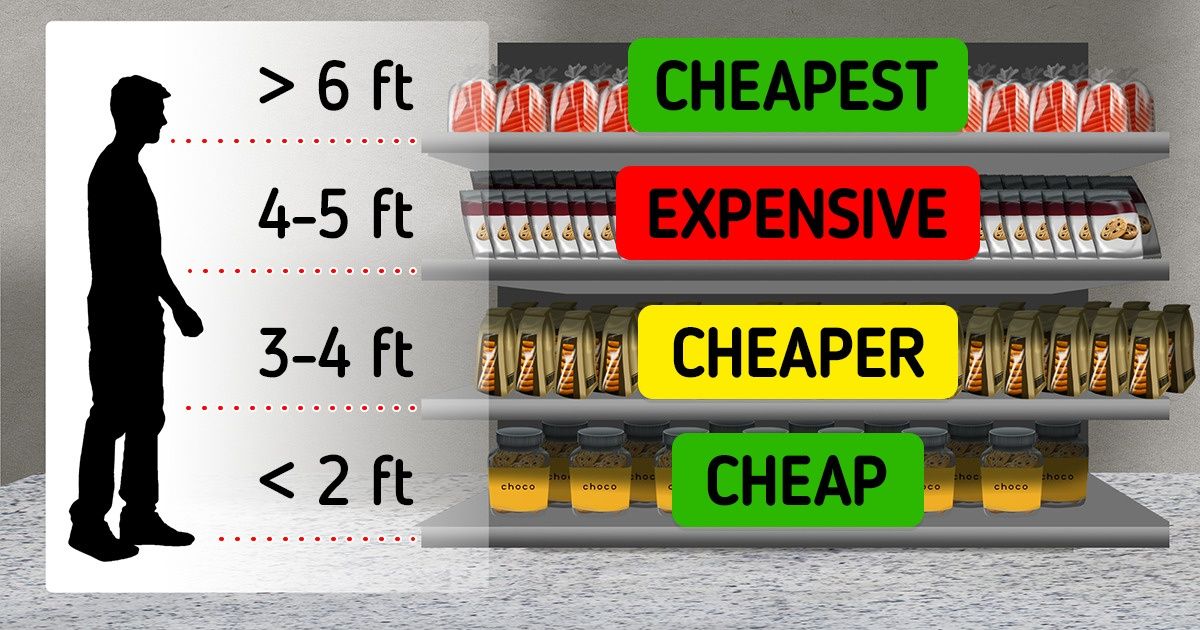
If your goal is to save money and time you should start by evaluating your shopping habits. We at 5-Minute Crafts have tips that will help you train yourself to slowly cut spending and also become more aware of your budget and still end up with good products in the end.
1. Don’t go shopping with your kids.
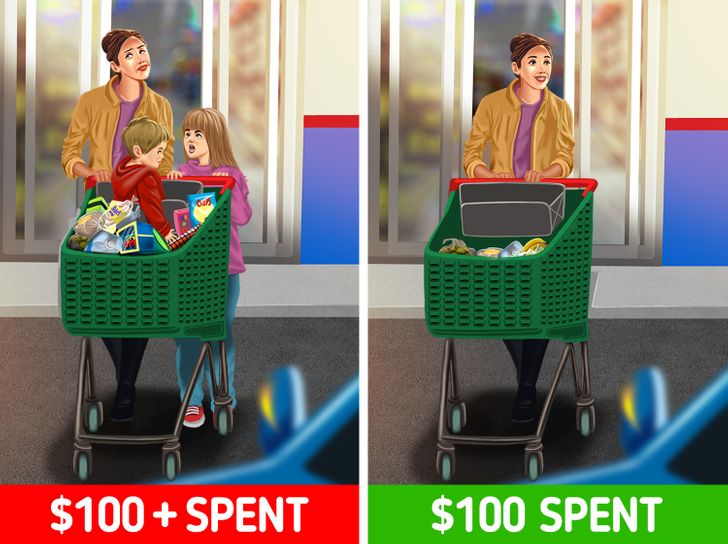
When possible, go shopping by yourself, for example, when your kids are at school or when there is someone to look after them. It will be easier to stick to your list, you will save money, and you won’t have to say “no” a million times.
2. Stick to your list.
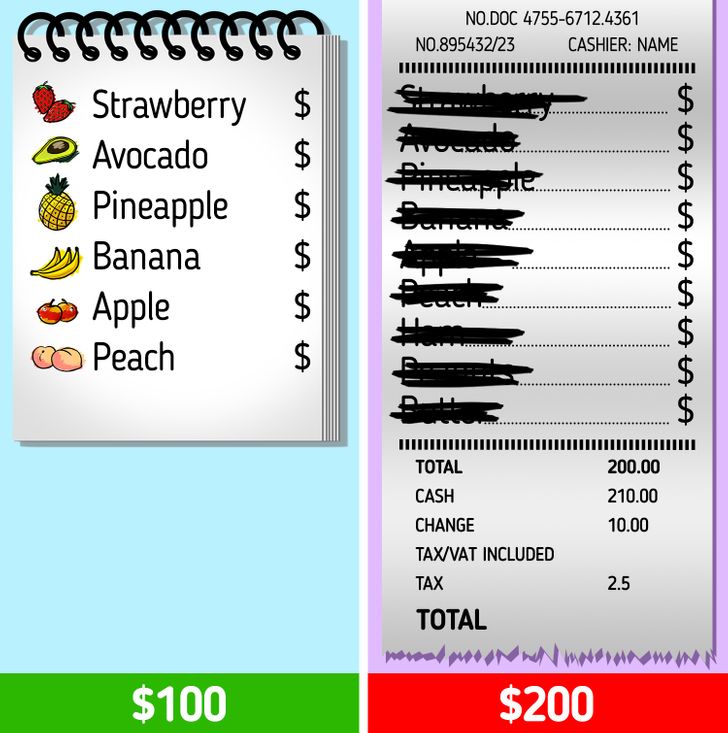
Try your best to avoid impulse buys. Most of the time they end badly, meaning you will have spent more than you planned. You might end up with even more than $50 spent on impulse products and when added up, it could mean thousands over the course of one year.
3. Keep your receipts.
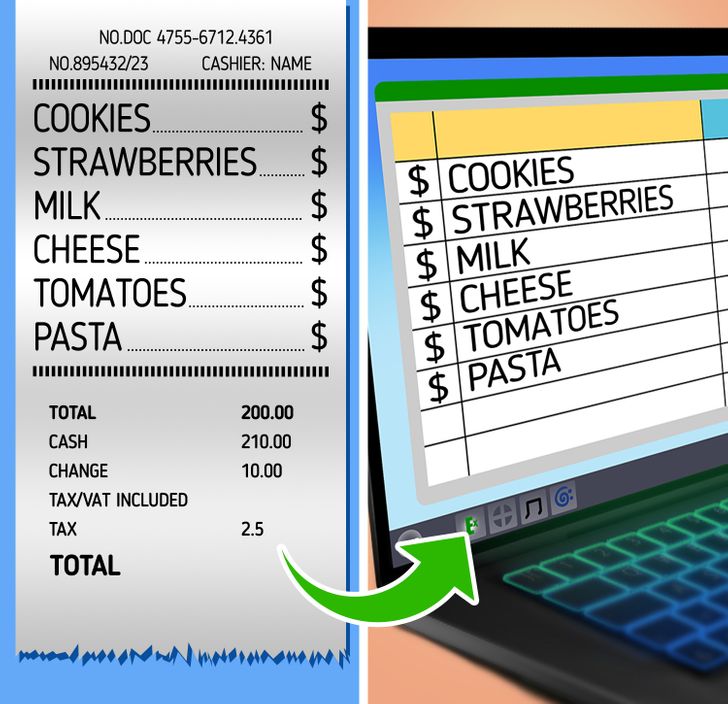
Receipts are a great way to keep track of the prices. Later, you will be able to compare sales and to see if it’s a good idea to buy in bulk during a sale. Enter the price and the names of the items in a spreadsheet because it can also help you create your next shopping list.
4. Take the downhill challenge.
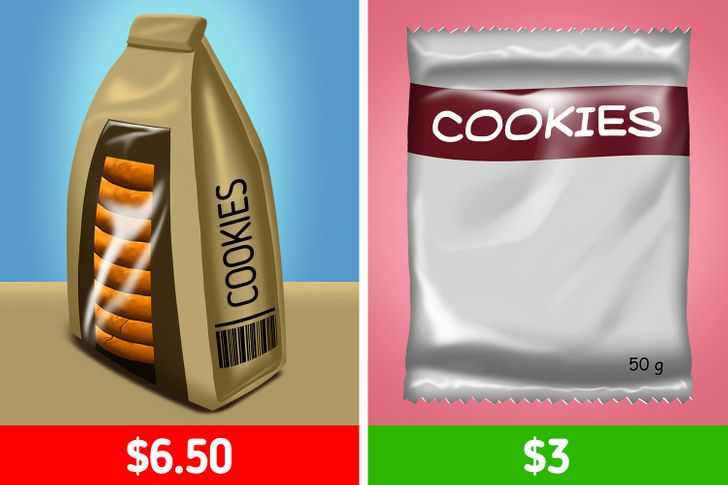
Supermarkets tend to separate their products into categories to give you the feeling that some products are “luxury” and some are “basic.” This also means that they are more or less expensive. The presentation of the “luxury” products is highlighted to get your attention but, in some cases, both products may even be made at the same factory.
The downhill challenge means trying to drop one brand level on every product you purchase. After that, see if you can actually tell the difference. If not, then stick to the cheaper one and you’ll start saving money, bit by bit.
5. Check the prices on the lower and top shelves.
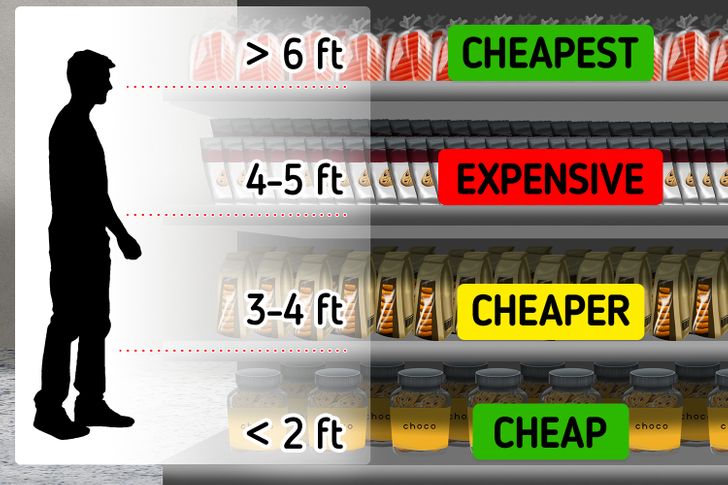
There are 4 main height zones retailers use to display and sell their products more effectively:
- Stretch level (above 6 ft). This is the least valuable zone. Products placed at this height tend to get little attention from shoppers and, consequently, are the cheapest.
- Eye level (4-5 ft). Products placed at this level are the most profitable ones because they’re more noticeable and it’s very easy to just grab something and go. This is why retailers place the more expensive products there.
- Touch level (3-4 ft). This level is located approximately near your waist line and it’s the second in terms of shopper attention as it’s still a good place for promoting items. Also, this is the eye level for an average kid. That’s why all the kid’s items like sweet cereals, chocolates, cookies, and candy are located here.
- Stoop level (less than 2 ft). Most shoppers don’t like to bend down, so this zone is mostly dedicated to low-margin products. Thanks to this, if you try to bend over to look for the items you need, you can find some good prices on these shelves.
6. Don’t rush when you see a “good deal.”

If you see a product on sale and you think you could save money by buying it, don’t get it immediately. First, ask yourself a few questions and see if it’s truly a “good deal”:
- Do I really need or want this product?
- Am I buying it just because it’s on sale now?
- Can I afford it, even if it’s on sale?
- Do I want to buy it even if it adds more debt to my credit card?